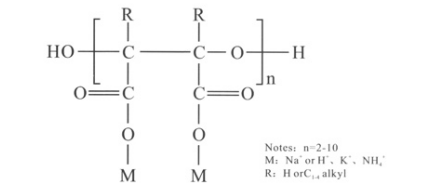
News
Out . 09, 2024 21:08 Back to list
chelating or sequestering agent price
Understanding Chelating and Sequestering Agents Importance, Application, and Pricing
Chelating and sequestering agents are crucial compounds in various fields, including agriculture, pharmaceuticals, environmental science, and industrial applications. They play a vital role in binding metal ions, thereby preventing them from reacting undesirably in various processes. As the demand for these agents grows, so does interest in their pricing dynamics, influencing their integration into diverse applications.
What are Chelating and Sequestering Agents?
Chelating agents, also known as chelators, are molecules that can form multiple bonds with a single metal ion. This characteristic allows them to 'trap' metal ions by wrapping around them—hence the term chelation, derived from the Greek word chēlē, meaning claw. Common chelating agents include ethylene diamine tetraacetic acid (EDTA) and diethylene triamine pentaacetic acid (DTPA).
Sequestering agents, while sometimes used interchangeably with chelating agents, specifically refer to compounds that help keep metal ions in a stable, soluble form. They are often used in cleaning products and water treatment to prevent metal ions from causing unwanted reactions, such as corrosion or discoloration.
Applications Across Industries
1. Agriculture Chelating agents are crucial in fertilizers for enhancing nutrient bioavailability. They help in stabilizing vital micronutrients like iron, zinc, and manganese in the soil, making them more accessible to plants. As organic farming trends rise, the demand for environmentally friendly chelating agents is increasing.
2. Pharmaceuticals In the medical field, chelators like EDTA are used to treat heavy metal poisoning, such as lead or mercury. These agents help remove toxic metals from the body, thus playing a critical role in patient recovery.
3. Environmental Science Chelating agents are employed in environmental remediation, where they assist in the decontamination of soil and water by mobilizing and removing toxic metals, preventing them from entering the food chain.
4. Industrial Applications In industrial processes, these agents prevent the precipitation of metal ions, enhance the efficacy of detergents, and improve the quality of textile manufacturing. They are also used in the production of paper and ceramics as an effective means to control metal ions that could disrupt these processes.
chelating or sequestering agent price

Pricing Factors of Chelating and Sequestering Agents
The price of chelating and sequestering agents can vary significantly based on several factors
1. Raw Material Costs The price of the raw materials used to manufacture these agents impacts their final price. Fluctuations in the costs of chemicals and the availability of resources can lead to price volatility.
2. Production Process The complexity of the manufacturing process also influences pricing. More sophisticated production techniques that yield higher purity and quality will generally incur higher costs.
3. Demand and Supply Dynamics The changing demand in various sectors directly affects pricing. For instance, a rise in agricultural production or new environmental regulations mandating the use of specific agents could drive up demand, thus increasing prices.
4. Regional Variations Prices can vary by geography based on local regulations, labor costs, and production capabilities. For example, regions with strict environmental regulations may see higher prices due to increased compliance costs.
5. Market Competition The level of competition among suppliers can also impact pricing. In markets with numerous players, prices may be more competitive, whereas in markets dominated by a few suppliers, prices may remain elevated.
Conclusion
As industries increasingly recognize the importance of managing metal ions in their processes, the demand for chelating and sequestering agents is likely to continue growing. Understanding the factors that influence their pricing will be crucial for industries looking to integrate these agents effectively while maintaining cost-efficiency. As research advances and more eco-friendly alternatives are developed, the market for these agents will undoubtedly evolve, prompting stakeholders to stay informed about trends and pricing strategies to remain competitive in their respective fields.
-
Polyaspartic Acid Salts in Agricultural Fertilizers: A Sustainable Solution
NewsJul.21,2025
-
OEM Chelating Agent Preservative Supplier & Manufacturer High-Quality Customized Solutions
NewsJul.08,2025
-
OEM Potassium Chelating Agent Manufacturer - Custom Potassium Oxalate & Citrate Solutions
NewsJul.08,2025
-
OEM Pentasodium DTPA Chelating Agent Supplier & Manufacturer High Purity & Cost-Effective Solutions
NewsJul.08,2025
-
High-Efficiency Chelated Trace Elements Fertilizer Bulk Supplier & Manufacturer Quotes
NewsJul.07,2025
-
High Quality K Formation for a Chelating Agent – Reliable Manufacturer & Supplier
NewsJul.07,2025
